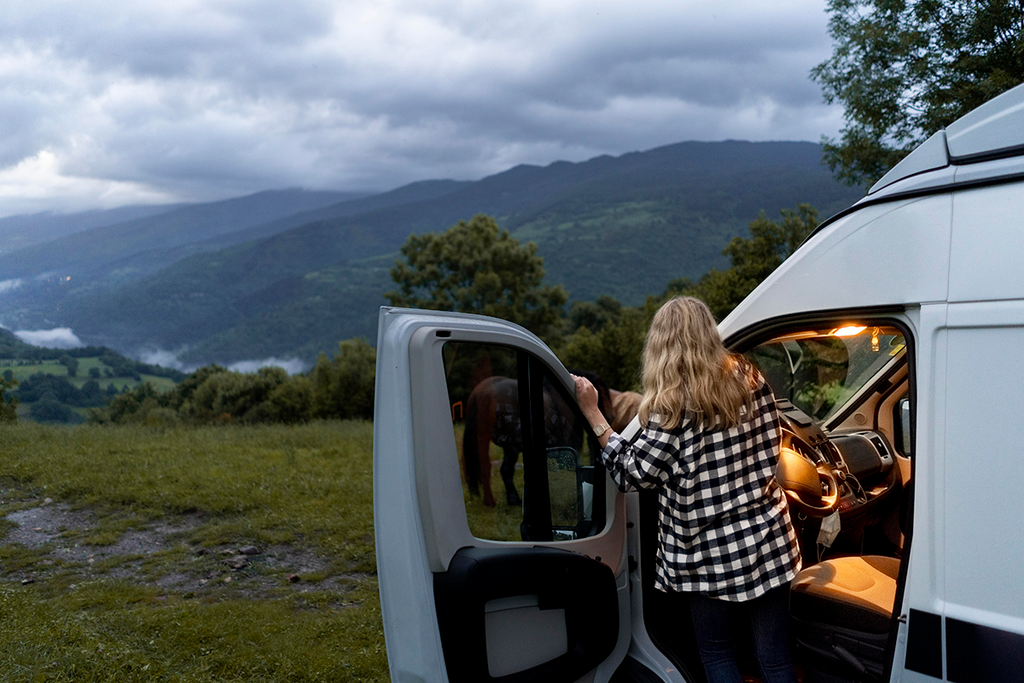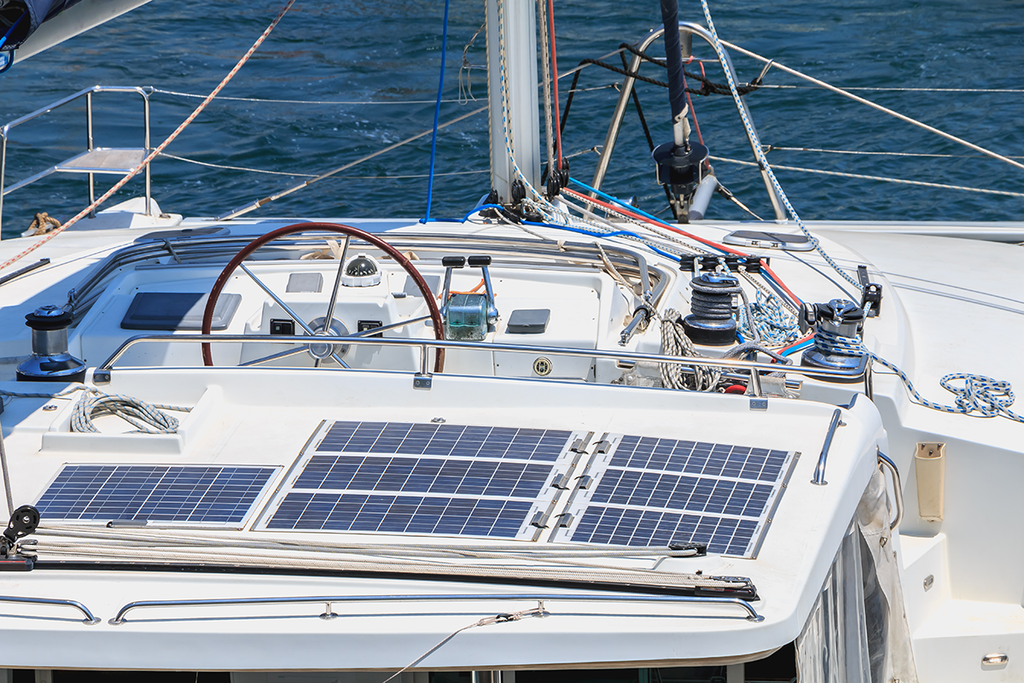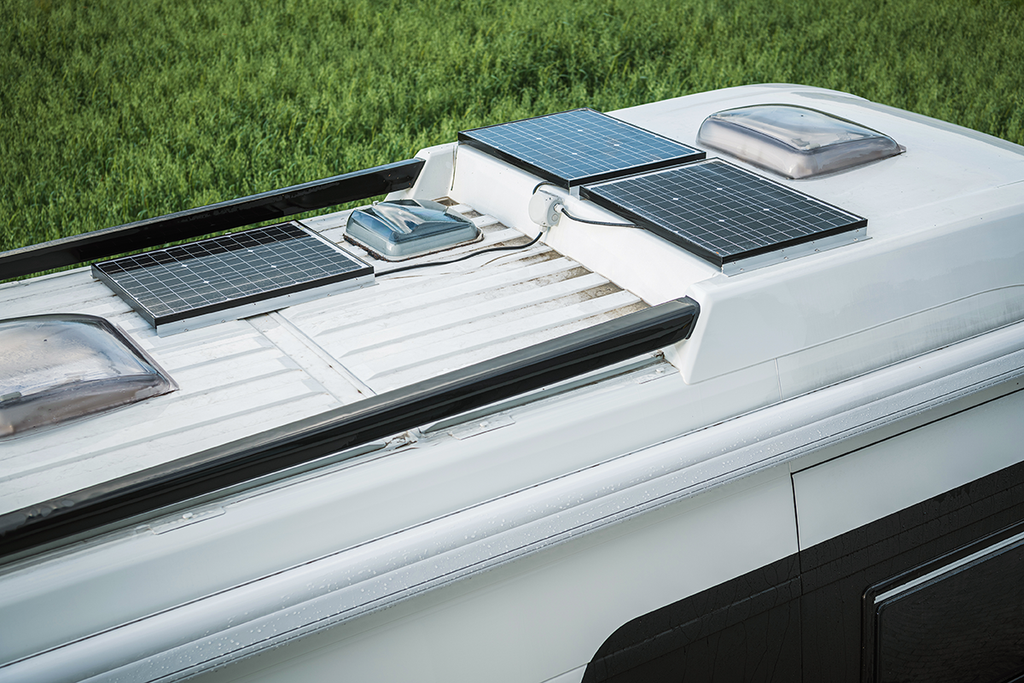Complete Buying Guide For Flexible/Semi-Flexible Solar Panels
Posted by Tina Kassaeian on

In the world of renewable energy, solar power stands out as a shining star, offering a sustainable and reliable source of electricity. With advancements in technology, solar panels have become more versatile, paving the way for flexible and semi-flexible solar panels.
If you're considering harnessing solar energy for your home, RV, boat, or any other application, this comprehensive buying guide will explain everything you need to know about flexible and semi-flexible solar panels.
Understanding Flexible and Semi-Flexible Solar Panels
Flexible and semi-flexible solar panels are designed to be more adaptable than traditional rigid solar panels. They are typically made using lightweight and flexible materials such as polymer substrates, allowing them to conform to curved surfaces. While flexible panels can bend to a greater extent, semi-flexible panels offer a balance between flexibility and durability, often featuring a layer of tempered glass for added protection.

Applications of Flexible Panels on Various Surfaces
Boat & Yacht: Flexible solar panels are ideal for boats and yachts, seamlessly integrating into curved surfaces such as decks and cabin tops. They provide a reliable source of clean energy to power navigation equipment, communication devices, and onboard systems.
RV & Trailer: Mounted on the roof or exterior walls, flexible solar panels turn RVs into self-sustaining hubs for off-grid adventures. They conform to the vehicle's curves, providing silent and sustainable power for appliances and electronics, perfect for boondocking or camping trips.
Curvy Surfaces: These panels are perfect for unconventional installations on curved surfaces. From vehicles to buildings, they conform to any shape, providing a stylish and versatile solution for harnessing solar energy in challenging environments.

Advantages of Flexible and Semi-Flexible Solar Panels
- Versatility: Their bendable nature enables installation on surfaces with curves or irregular shapes, making them suitable for various applications such as RVs, boats, tents, and backpacks.
- Portability: Lightweight and easy to transport, flexible and semi-flexible panels are ideal for mobile or off-grid setups where space and weight are limited.
- Durability: Despite their flexibility, many models are designed to withstand harsh environmental conditions, including high winds, hail, and snow, thanks to their robust construction and tempered glass layer.
- Aesthetics: The sleek and low-profile design of these panels allows for a more aesthetically pleasing installation compared to traditional solar panels, especially on curved or unconventional surfaces.

Considerations Before Buying
Before purchasing flexible or semi-flexible solar panels, consider the following factors to ensure they meet your specific needs:
- Power Output: Determine the wattage required to meet your energy demands. Flexible and semi-flexible panels come in various wattages, so choose one that aligns with your power requirements.
- Compatibility: Check compatibility with your existing solar system components, including charge controllers, inverters, and batteries, to ensure seamless integration.
- Installation Location: Assess the installation location to determine whether flexible or semi-flexible panels are suitable. Consider factors such as sunlight exposure, mounting options, and surface curvature.
- Quality and Warranty: Invest in panels from reputable manufacturers known for quality craftsmanship and reliable warranties. Look for certifications such as UL to ensure compliance with industry standards.
- Budget: While flexible and semi-flexible panels may come at a premium compared to rigid panels, weigh the upfront cost against the long-term benefits and savings in installation and maintenance.

Installation and Maintenance Tips
#1 Surface Preparation: Ensure the mounting surface is clean, smooth, and free of debris before installing the panels to maximize adhesion and performance.
#2 Mounting Methods: Depending on the application, choose the appropriate mounting method, such as adhesive backing, grommets, or zip ties, to secure the panels in place effectively.
#3 Avoiding Shading: Minimize shading from nearby objects or obstructions to maximize sunlight exposure and optimize energy production.
#4 Regular Cleaning: Keep the panels clean and free of dirt, dust, and debris to maintain optimal efficiency. Use a soft brush or cloth and mild detergent to gently clean the surface as needed.
#5 Periodic Inspection: Routinely inspect the panels for any signs of damage, such as cracks, delamination, or loose connections, and address any issues promptly to prevent further damage or performance degradation.
Top Flexible/Semi-Flexible Solar Panels
Choosing the right flexible panel can be a tough decision with so many brands out there. But fear not, because at Volts Energies, we've got you covered! Our solar experts have handpicked the following recommendations from Elios solar collection just for you:
Voltaic210F-T Semi-Flexible Solar Panel

Engineered with state-of-the-art PERC Solar Cells, the Voltaic210F-T is perfect for off-grid systems requiring curved surfaces such as RVs and boats.
- High-quality monocrystalline cells
- Flexible up to 213°
- Grade A solar cell
- Lightweight, only 7.2kg
- Produces 210W
Voltaic110F Semi-Flexible Solar Panel

Crafted with top-grade polymer materials, the Voltaic110F is ideal for marine vessels and RVs.
- High-quality monocrystalline cells
- Easy installation with six metal-reinforced mounting holes
- Flexible up to 213°
- Grade A solar cell
- Lightweight, only 2.3kg
- Produces 110W
Voltaic210F-B Semi-Flexible Solar Panel

Designed to transform balconies into sustainable energy hubs, the Voltaic210F-B boasts ultra-lightweight monocrystalline solar cells.
- High-quality monocrystalline cells
- Easy installation with 12 metal-reinforced mounting holes
- Flexible up to 213°
- Grade A solar cell
- Lightweight, only 4.5kg
- Produces 210W
With these advanced flexible/semi-flexible solar panels, you can seamlessly integrate solar power into any environment.
Conclusion
Flexible and semi-flexible solar panels open up a world of possibilities for harnessing solar energy in diverse applications. By understanding their advantages, considering key factors before purchase, and following proper installation and maintenance practices, you can enjoy clean and sustainable power wherever your adventures take you.
If you need personalized quote or further assitance contact our solar expert and they are happy to help you find the best option.
